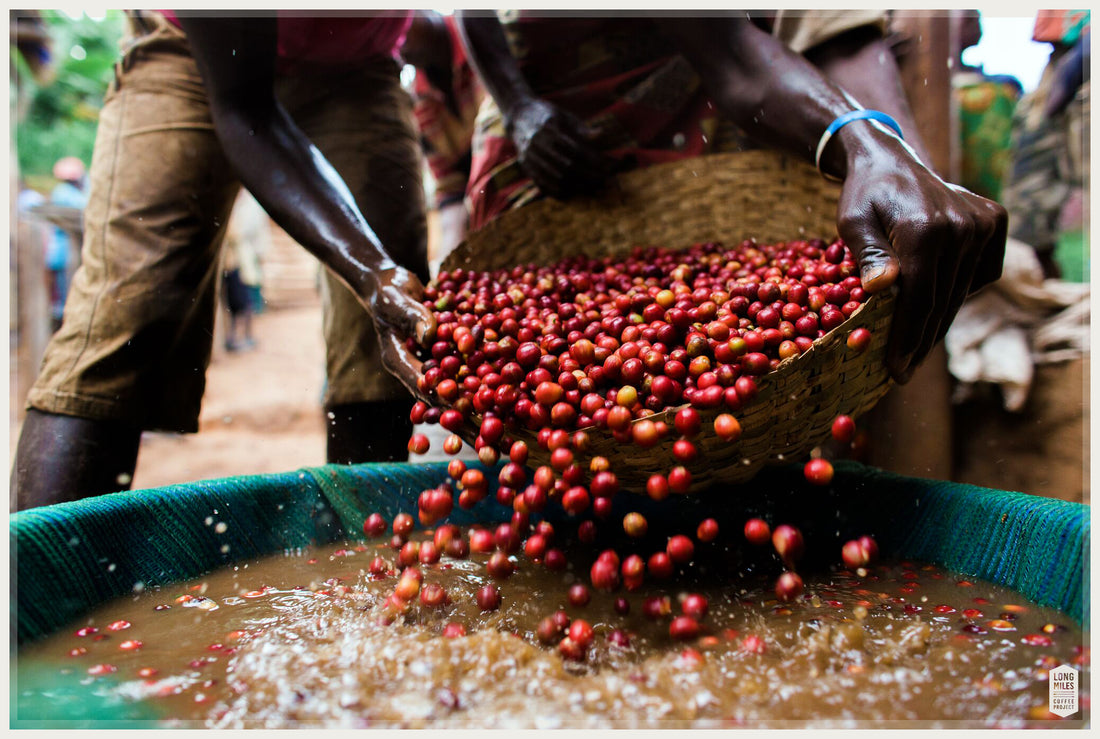
The Science of Coffee: Coffee the Botanical Part I
Share
You take that first sip, whilst still in a daze, barely remembering the blurry eyed moments that got you to your daily fix. This is the ritual that kicks off your day. You begin to plan whatever comes next, juggling tasks in your head, anticipating conversations, and preparing for any obstacle that may land in your way. Soon the coffee is all gone, you’ve thrown the cup away, and it’s time to really start the day. It can be so routine and natural, you don’t give it much thought aside from knowing it’s the most important part of your morning.
Have you ever wondered how that coffee got into your cup? The work and process that goes behind getting your morning started has always been something kept behind the scenes. Over the next few posts we’d like to elucidate some of the lesser known and important ways Earth’s second largest commodity (right behind oil) gets from farm to cup.
For starters let’s clear up a little misnomer: coffee beans are not beans—they don’t jump and they don’t grow stalks high up into the clouds (albeit coffee thrives the closer it gets to them—more on that later). Beans (or legumes) are seeds of a particular family of plant: Fabaceae (aka pea family), which is entirely unrelated to the family: Rubiaceae (aka madder or bedstraw family), to which coffee belongs. The coffee plant, which is technically a shrub or a tree (depending on species and growing conditions), produces fruit. The coffee fruit is actually a cherry. These cherries, like all other stone fruit, produce seeds, or what is often referred to as a pit. This taxonomical difference is not of little significance.
Still, we refer to coffee pits as beans, because that’s how they are still referred to in the coffee community, as well as colloquially. More often than not coffee “beans” develop as twins—pressed tightly up against one another, with flattened facing sides. When removed from then cherry, the resemble the shape of a bean. Less often, but common in certain regions, only one of the two beans is fertilized. This lone seed grows with nothing to flatten it resulting in a prolate spheroid, or pea shape. We call these peaberries.
All the focus on the “coffee bean” has caused us to forget about the most important part of the coffee cherry: Cascara. What is Cascara? Cascara is the fruit of the cherry that surrounds the bean. In countries to which coffee cultivation is indigenous, Cascara is ingrained in their culture, via a variety of different beverages. Here in the US it has only recently begun to gain recognition.
During processing, it is either washed off, partially washed off and fermented, or wholly fermented on the beans. The three types of processing have many different variations unique to washing station and region. (More on that to come.)
Why is Cascara important? The flavor of a particular coffee bean is not from the bean itself, but more so from the fruit surrounding it. Cascara is where the sugars, antioxidants, caffeine and other energizing xanthines come from. For this reason, each processing method dramatically alters the flavor of a particular coffee.

So next time you take that too-hot to drink sip from your favorite Coffee Labs coffee, we hope you take a moment to think about not just how your coffee tastes, but also think of the plant from which those “beans” came. Believe it or not we’ve only begun to touch upon the intricacies of this unique and utilitarian botanical.
Look for our future posts where we’ll continue to instill as much knowledge about how our favorite beverage makes it from farm to cup.

1 comment
Interesting information about coffee. Keep them coming!